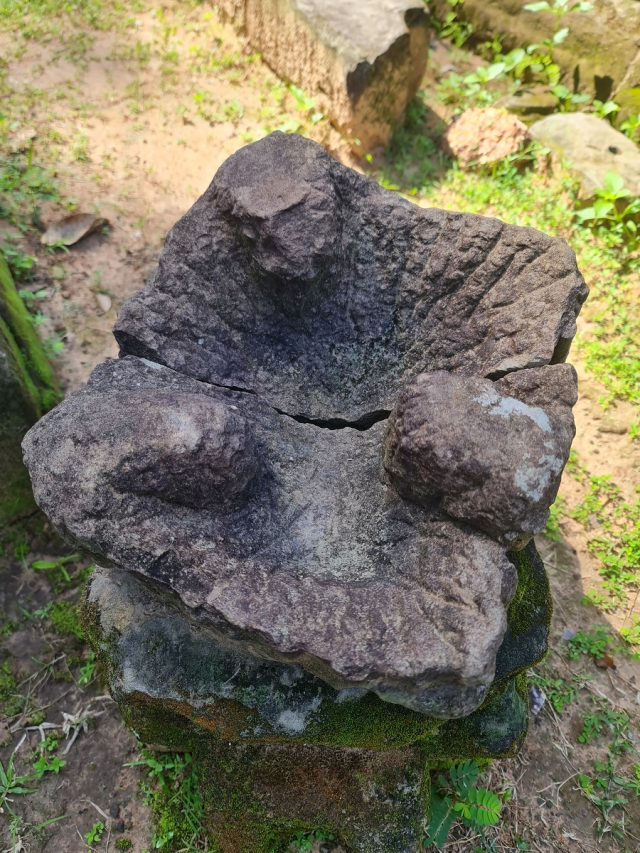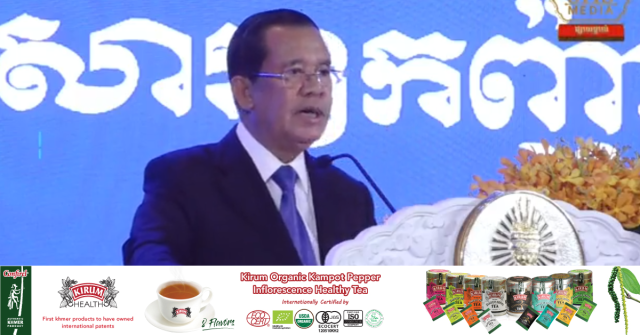A Rare Stone Stove from a Post Angkor Era Discovered

- By Isa Rohany
- July 23, 2023 2:00 PM
SIEM REAP — A limestone charcoal stove from centuries ago, possibly the first one to have ever been discovered, has sparked the attention of the archaeological community in Siem Reap province.
Roughly shaped like a cuboid, the 3-legged stove—whose fundamental design still remains popular today—measures around 10-by-20 centimetres.
Im Sokrithy, a senior archaeologist with the APSARA National Authority, who discovered this object, said during an interview that he noticed it in an open space among broken temple stones at the eastern entrance of the Ta Prohm temple in Angkor Archeological Park. For the untrained eye, it would have been easy to miss.

For researchers, objects such as this ancient stove does act as a building block in the study of how people from a distant past went about their daily lives. An activity as simple as people gathering for meals and filling up a stomach, which stood behind the creation of these large monuments.
The stove was broken into two pieces when it was discovered.
“Based on surface evidence, this object was used [for cooking] not during the Angkor period, but the stone sculpture shows that it was a base for a Naga statue on a cruciform platform in front of Ta Prohm entrance, which is a temple during the Angkor period,” Sokrithy said during an interview. “After the Angkor period, Buddhists who inhabited the area improvised [adapting] this object for daily use.”
_1690091259.png)
Sokrithy believes that this piece of limestone was once a stone foundation used to bear a statue of Naga, a mythical being that is half human half serpent. Later on, when the statue crumbled, someone might have taken the stone base and reshaped it for culinary use, he said. The thick layer of dark residue on the object suggests that it was used for an extended period of time, he said.
It is generally accepted that the Angkor period, which began in the 9th century, came to a conclusion during the 14th century. It was a time during which architecture, religion, territorial expansion and more reached a dazzling height.
Normally, archaeologists would only find charcoal stoves made from heat-treated clay buried underground. This may be the first time that a limestone stove has been discovered.
“Apart from clay stoves, people from the past also used stone stoves,”Sokrithy said. “This finding gives us more evidence of the evolution of the materials in Khmer ancient kitchen.”
Written in Khmer for ThmeyThmey News, this article was translated by Ky Chamna for Cambodianess News.















